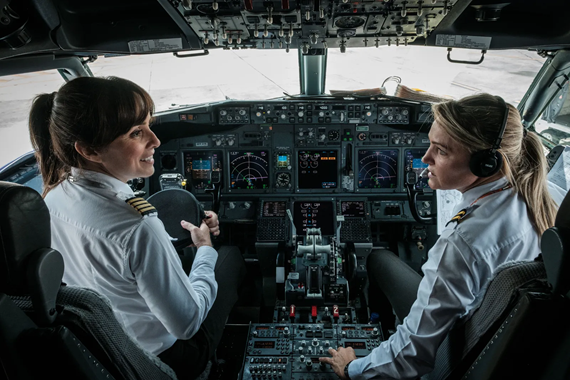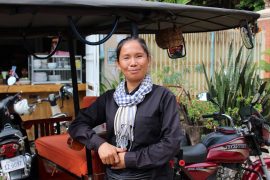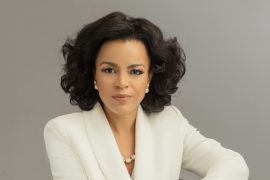India is a success story in aviation diversity since female pilots are no longer uncommon there. In 1989, Nivedita Bhasin became the youngest commercial airline captain in the world. Still, the Indian pilot vividly remembers those formative years when other crew members would nudge her into the cockpit so that customers wouldn’t feel uneasy seeing a woman piloting their aircraft.
Indian female pilots are no longer a novelty three decades after Bhasin’s career began, making the nation a success story in terms of diversity in the airline business. According to the International Society of Women Airline Pilots, India has the greatest proportion of female pilots in the world at roughly 12.4% of all pilots, compared to 5.5% in the US, the largest aviation market in the world, and 4.7% in the UK.
The figures make one wonder how a country that ranked 135th out of 146 on the World Economic Forum’s list of nations for gender parity could buck the trend in this specific sector. Some of the responses might serve as examples for other nations and industries working to increase the representation of women. Diverse organizations often perform better, and some studies have even suggested that female pilots experience fewer safety problems. Additionally, when the globe recovers from the Covid epidemic and demand increases, hiring more women might assist airlines in addressing the staff shortages that are causing flight delays.
Pioneers like Bhasin claim that several reasons, such as outreach initiatives, improved company practices, and strong family support, motivate Indian women. A 1948-formed youth program called the National Cadet Corps’ air wing, which trains pupils to fly microlight aircraft, attracted many Indian women to aviation. Some state governments provide financial aid for the pricey commercial pilot training, while organizations like Honda Motor Co. offer complete scholarships for an 18-month program at an Indian flying school and support their employees to make it more affordable for women.
Michele Halleran, a professor and head of diversity efforts at Embry-Riddle Aeronautical University in Florida, says, ” India has begun recruiting women into STEM fields, including pilots, decades ago.”
In the 1990s, the Indian Air Force started hiring female pilots for its transport and helicopter fleet. They weren’t permitted to take on combatant responsibilities until this year.
In India, certain airlines create strategies to keep women in leadership positions. The biggest passenger airline in India, IndiGo, claimed to give female crew and pilots freedom to continue working safely, without flying tasks, while expecting. It provides the legally needed 26 weeks of paid maternity leave in addition to childcare facilities. Women pilots have the option of a flexible contract with two weeks of leave every month up until the age of five.
According to a spokeswoman, Vistara gives pregnant pilots and cabin crew the choice of temporary work on the ground or administrative positions until they are ready to fly. Additionally, it offers a six-month paid maternity leave and covers creche costs.
Hana Khan, a commercial pilot with an Indian airline, said that some carriers also deploy a chauffeur and security to drop off and pick up ladies travelling late at night.
Another more mundane justification for the success of many Indian women pilots is family support. Pilots claim that the familial structure in India, where extended families frequently coexist, and grandparents and aunts frequently assist in childrearing and household management, is particularly beneficial for an occupation that necessitates long hours and frequent trips away from home. It’s no secret that we have parental support, and hiring personnel is a routine, according to Zoya Agarwal, who gained international media attention last year when she piloted Air India’s first nonstop flight with an all-female crew from San Francisco to Bengaluru. Women like me may take a five-day flight to San Francisco and not worry about what is happening at home. You may feel at ease.
Because airline markets in nations like the US are significantly larger and have more prominent overall personnel of both men and women, the absolute numbers of women pilots still tend to be higher there than in India.
The continuous shortage of pilots and airport staff, which is causing airlines to curtail and cancel flights and endangering to snarl the aggressive traffic resurgence, can be alleviated by recruiting more women. Over the next 20 years, the globe will require more than 600,000 more pilots, according to Boeing Co.
Several others think the advantages may go even farther and may even be responsible for India’s aviation safety rankings, which are higher than those of some wealthy countries.
According to the Aviation Safety Network, the US has seen nearly five times as much fatal aviation crashes as India since 1945, while the UK has experienced 15 more tragic events.
Given that more flights increase the likelihood of accidents, some of the statistical discrepancies might be explained by the fact that the US has a bigger aviation market than India. However, many pilots feel that having a sizable female population is at least beneficial to safety.
According to a research titled Gender Differences In General Aviation Crashes, which examined data on helicopter and aeroplane crashes between 1983 and 1997, male pilot crash rates were higher than those of female pilots. Women in Combat Arms: A Study of the Global War on Terror contrasted the accident statistics of men and women and found that women fly aircraft “more safely,” accounting for only 3% of mishaps while making up 10% of all US army helicopter pilots.
According to Halleran, a professor at Embry-Riddle Aeronautical University, increasing diversity has the potential to make air travel safer since women frequently adopt a more calculated attitude to risk and are consequently involved in fewer accidents than males.
At the Indian flight school Indira Gandhi Rashtriya Uran Akademi, chief flight instructor Kunjal Bhatt noted that she found female trainees to be particularly “meticulous” and display greater dedication to succeed because the stakes are higher for those who defy social norms to pursue this profession.
Indian women who have made it in the airline business are teaching young females about the sector. Harpreet A. De Singh runs outreach initiatives in schools to increase awareness of careers such as pilots, technicians, and air traffic controllers. She became the first woman to lead an Indian airline when she assumed leadership of Alliance Air Aviation Ltd. in 2020.
“Over time, our constant work across the nation has led to a significant increase in the number of women selecting a career, some of whom didn’t even know it existed,” Singh added.





Comments are closed.